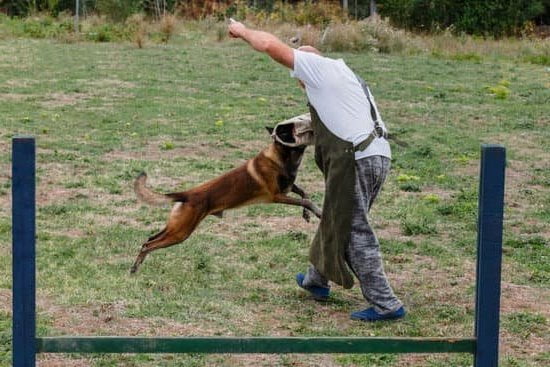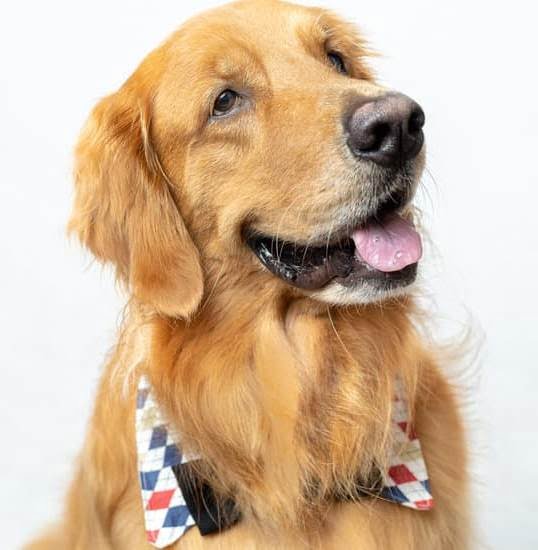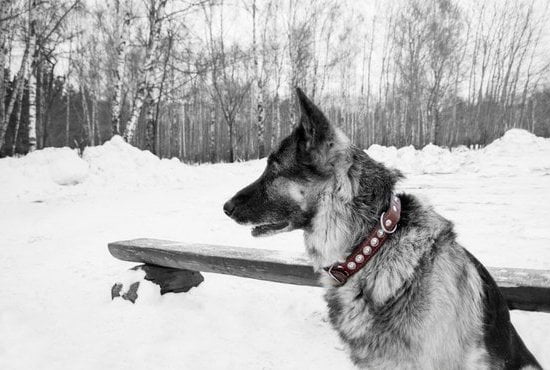Training dogs for autism awareness and support has become increasingly popular in recent years. The unique bond between a dog and their owner can provide numerous benefits for individuals with autism spectrum disorder (ASD). These dogs, known as autism assistance dogs, are trained to assist and support those with ASD in various ways. From providing comfort during sensory overload to preventing self-harming behaviors, these loyal companions play a vital role in the lives of individuals with autism.
One of the primary benefits of training dogs for autism is their ability to provide emotional support. For many individuals with ASD, social interactions can be overwhelming and anxiety-inducing. Having a dog by their side can offer a sense of comfort and security, reducing stress levels and promoting overall well-being. In addition, these specially trained dogs can help individuals navigate social settings, acting as a bridge between them and their peers.
Furthermore, autism assistance dogs are capable of learning specific tasks that cater to the needs of individuals with ASD. This includes alerting others when the person is in distress or physically intervening if there is a potential danger present. By performing these tasks, these highly skilled animals enhance the safety and independence of those they support.
In this article, we will explore the wonders of canine companionship in relation to autism and delve into the process of training dogs to become reliable sources of support. From selecting the perfect breed for autism assistance to advanced training techniques catered towards specific tasks, we will cover all aspects necessary to ensure success.
Additionally, we will discuss ways to maintain consistency in training efforts and raise awareness about the significant impact that autism assistance dogs have on both individuals with ASD and their communities.
Through this journey of understanding how to train your dog for autism, we hope to promote inclusivity, improve quality of life, and empower those affected by ASD through this unique partnership between humans and animals.
The Role of Assistance Dogs in Autism
Assistance dogs play a crucial role in providing support and companionship for individuals with autism. These incredible animals are trained to assist and enhance the lives of those on the autism spectrum, offering both practical assistance and emotional support. The bond between an individual with autism and their assistance dog can be transformative, helping to improve communication skills, promote social interaction, reduce anxiety, and increase independence.
One of the key roles that assistance dogs play in supporting individuals with autism is providing a sense of safety and security. Many individuals with autism experience difficulties with sensory processing or have heightened anxiety levels, making it challenging for them to navigate public spaces or unfamiliar environments.
Assistance dogs can help alleviate these challenges by creating a comforting presence for their owners. With their calming demeanor and ability to provide tactile input through touch or deep pressure therapy, these dogs can help reduce stress and provide a much-needed sense of stability.
In addition to emotional support, assistance dogs also assist individuals with everyday tasks and routines. They are trained to perform various tasks such as retrieving medication or items, opening doors, alerting to sounds or alarms, interrupting self-harming behaviors, guiding during elopement situations, and even providing deep pressure therapy during moments of distress. These tasks not only enhance independence but also empower individuals with autism to live more fulfilling lives by reducing barriers and increasing their autonomy.
The impact of assistance dogs on the lives of individuals with autism cannot be overstated. The wonders of canine companionship go beyond mere practical assistance; they extend into areas such as social skills development, emotional regulation, and increased overall well-being. As we continue to explore the benefits of training dogs for autism awareness and support, it becomes increasingly clear that these amazing animals truly have the power to change lives one interaction at a time.
Selecting the Perfect Dog for Autism
When it comes to selecting the perfect dog for autism, there are several factors that should be carefully considered in the breed selection process. The right breed can make a significant difference in the success of the dog’s role in autism support.
One important factor to consider is the size of the dog. It is generally recommended to choose a medium-sized or large dog for autism assistance. These dogs tend to have more physical strength and stability, which can be helpful when providing stability and support for individuals with autism.
However, it is also important to consider the specific needs and preferences of the individual with autism. Some may feel more comfortable with a smaller dog, while others may benefit from a larger one.
Another factor to consider is the temperament and personality of the dog. Autism assistance dogs need to be calm, patient, and gentle in order to effectively support individuals with autism. They should also be able to remain focused in busy environments and not easily distracted by loud noises or sudden movements. Breeds that are known for their calmness, such as Golden Retrievers or Labradors, are often popular choices for autism assistance.
Additionally, it is important to consider the energy level of the breed. Autism assistance dogs need to have enough energy and endurance to keep up with their daily tasks and responsibilities. Dogs that require a lot of exercise or mental stimulation may not be suitable for this role if they become easily tired or restless.
Taking into account these factors will help ensure that you select a dog that is well-suited for its role as an autism assistance dog. Each individual with autism has unique needs and preferences, so it is important to carefully evaluate and match those needs with the characteristics of different breeds during the selection process.
| Factor | Considerations |
|---|---|
| Size | Medium-sized or large dog for stability and support |
| Temperament | Calm, patient, and gentle |
| Energy Level | Enough energy and endurance for daily tasks |
The Importance of Early Socialization
Understanding the Role of Socialization
Early socialization is a crucial aspect of training dogs for autism support. It involves exposing the dog to a wide range of people, animals, environments, and experiences in a positive and controlled manner. By doing so, you can help your dog develop the necessary skills, temperament, and behavior to effectively carry out its special role in supporting individuals with autism.
The primary goal of socializing your dog is to ensure that it becomes comfortable and confident in various situations. This is important because assistance dogs for autism often accompany their owners in public places such as schools, shopping centers, or parks. By introducing your dog to different settings and stimuli at an early age, you can help minimize anxiety or fear responses that may hinder its ability to perform tasks or provide support in these environments.
Methods for Early Socialization
There are several effective methods for socializing your dog during its early development stage. One approach is gradual exposure, where you gradually introduce your dog to new people, places, sounds, and objects one at a time. Start with low-stress environments and gradually increase the level of difficulty as your dog becomes more comfortable.
Another method is positive reinforcement training. This involves associating social experiences with rewards such as treats or praise. For example, when introducing your dog to unfamiliar children or individuals with autism, reward them for calm behavior and positive interactions. This helps create positive associations with those specific social situations.
It’s also important to expose your dog to various types of handling touch and grooming activities early on so that it becomes comfortable being touched by different individuals and can tolerate the handling that may be necessary in its role as an autism support dog.
By prioritizing early socialization and using effective methods, you can help prepare your dog for its special role in supporting individuals with autism. The foundation built during this critical period will contribute greatly to the success and effectiveness of the dog as an autism support companion.
Basic Training Techniques for Autism Assistance Dogs
When it comes to training dogs for autism assistance, building a strong foundation through basic training techniques is crucial. These techniques lay the groundwork for the dog to understand its role and responsibilities in supporting individuals with autism. Here are some key steps to follow when training your dog for autism assistance:
- Obedience Training: Start by teaching your dog basic obedience commands such as sit, stay, come, and leave it. These commands will not only help in managing the dog’s behavior but also ensure safety for both the dog and the individual with autism. Use positive reinforcement techniques like treats and praise to reward good behavior.
- Leash Training: Leash training is essential for an assistance dog as it allows them to accompany their handler safely in public spaces. Begin by introducing your dog to a leash in a controlled environment, gradually increasing the distractions as they become more comfortable. Teach them how to walk calmly on a leash without pulling or lunging.
- Distraction Training: It’s important to desensitize your assistance dog to various distractions they may encounter while performing their duties. Introduce them to different sounds, smells, and sights that they may encounter in real-life situations. Reinforce their focus and reward them for ignoring distractions.
- Task Specific Training: In addition to basic obedience, teach your assistance dog specific tasks that can benefit individuals with autism. Some common tasks include alerting the handler when they display repetitive behaviors or self-harm tendencies, interrupting meltdowns by using deep pressure therapy, and guiding their handler away from potentially dangerous situations.
- Public Access Training: Proper socialization and exposure to various environments are vital for an autism assistance dog. Gradually expose your dog to different public settings such as parks, shopping centers, schools, and restaurants while practicing obedience commands and task-specific training techniques. Ensure that they remain calm and well-behaved in these situations.
By following these basic training techniques, you can build a strong foundation for your autism assistance dog. Remember to be patient, consistent, and positive during the training process. Every dog is unique, so adjust the training methods according to their individual personality and needs. With time and effort, your dog will become a valuable support companion for individuals with autism.
Advanced Training Methods
Once your dog has mastered the basic training techniques for autism assistance, it is time to move on to more advanced tasks that will directly benefit individuals with autism. These specific tasks can help support and improve the daily lives of those on the autism spectrum. Here are some key training methods to consider:
- Sensory Sensitivity Training: Many individuals with autism experience sensory sensitivities, such as being overwhelmed by loud noises or bright lights. Advanced training can focus on desensitizing the dog to these stimuli and teaching them to provide comfort and support during overwhelming situations. For example, a trained dog may be taught to turn off lights or provide deep pressure therapy (such as lying across a person’s lap) when they sense their handler is becoming overwhelmed.
- Tracking and Searching: Dogs have an incredible sense of smell, which makes them ideal for tracking and searching tasks. Advanced training can involve teaching your dog how to find a missing object or locate a specific person in case of emergencies. This skill can be particularly useful for individuals with autism who may wander or become lost.
- Interrupting Self-Harming Behaviors: Some individuals with autism engage in repetitive self-harming behaviors, such as biting or hitting themselves. Advanced training can include teaching your dog to interrupt these behaviors by nudging their handler or performing a distraction technique, thereby helping redirect their attention.
| Task | Description |
|---|---|
| Sensory Sensitivity Training | Desensitizing the dog to overwhelming stimuli and teaching them comforting behaviors. |
| Tracking and Searching | Teaching the dog to find missing objects or locate a specific person in emergencies. |
| Interrupting Self-Harming Behaviors | Training the dog to interrupt repetitive self-harming behaviors with distraction techniques. |
These advanced tasks require careful and consistent training, building upon the foundation of basic skills. It is important to work closely with a professional trainer experienced in autism assistance dog training to ensure proper instruction and support throughout this process. By teaching your dog these specific tasks, you are empowering them to directly assist and improve the quality of life for individuals with autism.
Ensuring Dog and Child Safety
When training a dog for autism support, it is crucial to prioritize the safety of both the dog and the child with autism. Establishing boundaries and appropriate interaction guidelines is essential to prevent any potential harm or discomfort for either party. Here are some tips to ensure dog and child safety during their interaction:
- Supervision: It is important to closely supervise all interactions between the dog and the child with autism. An adult should always be present to monitor the situation and intervene if necessary. This ensures that any signs of discomfort or inappropriate behavior can be addressed immediately.
- Teach Gentle Handling: Teach your child how to interact gently with the dog by using soft voices, slow movements, and gentle petting. Show them how to approach the dog slowly from the side rather than head-on, as this can be less intimidating for the dog.
- Respect Personal Space: Help your child understand that dogs have personal space just like humans do. Teach them not to invade that space by hugging, squeezing, or pulling on the dog’s tail or ears. Encourage them to give the dog space when it seeks solitude.
- Avoid Overstimulation: Dogs can become overwhelmed by excessive noise, movement, or chaotic environments. Help your child understand that they need to respect the dog’s need for calmness and quiet moments. Create designated quiet spaces where both the child and the dog can retreat when feeling overwhelmed.
- Use Positive Reinforcement: Reward both your child and the dog for positive behaviors during their interactions. Praising gentle petting or respectful behavior helps reinforce positive habits while strengthening their bond.
Remember that each individual with autism has different needs and sensitivities, so it is crucial to adapt these guidelines accordingly. Consult with professionals in animal-assisted therapy or a certified trainer who specializes in training dogs for autism support for more personalized guidance tailored specifically to your situation. By establishing clear boundaries and appropriate interaction guidelines, you can create a safe and harmonious environment for both the child and the dog, fostering a strong and trusting relationship between them.
The Power of the Bond
The bond between an autistic individual and their support dog is a vital component of their relationship. This bond serves as the foundation for effective communication, trust, and understanding. Strengthening this bond not only enhances the overall well-being of both the individual and the dog but also maximizes the benefits that an autism assistance dog can provide.
One way to strengthen the bond between an autistic individual and their support dog is through positive reinforcement training techniques. By using rewards such as treats or praise, individuals can build a positive association with their dog and encourage desired behaviors. Consistency is key in this process, as it helps establish clear expectations for both the individual and the dog.
Another method to strengthen the bond is through shared activities and experiences. Engaging in regular play sessions or outings can enhance the connection between the two. These activities provide opportunities for both physical exercise and mental stimulation, contributing to a stronger bond between them.
Additionally, involving family members in training sessions can further strengthen the relationship. Family members can participate in training exercises or assist in caring for the support dog, creating a sense of shared responsibility and reinforcing trust within the family unit.
Overall, strengthening the bond between an autistic individual and their support dog is crucial for maximizing the benefits of their partnership. Through positive reinforcement training techniques, shared activities/experiences, and involvement from family members, this bond can be nurtured and enhanced over time. The result is a strong relationship built on trust, understanding, and companionship that ultimately improves the quality of life for both parties involved.
| Training Technique | Description |
|---|---|
| Positive Reinforcement | Rewards individuals with treats or praise to encourage desired behaviors |
| Shared Activities/Experiences | Engages in regular play sessions or outings to strengthen the bond |
| Involvement of Family Members | Participates in training exercises and assists in caring for the support dog to reinforce trust within the family unit |
Maintaining Training Consistency
Once you have trained your dog for autism assistance, it is important to maintain training consistency to ensure the continued success of your dog’s support role. Consistency in training not only helps reinforce learned behaviors but also enables ongoing development and growth in the partnership between the autistic individual and their support dog. In this section, we will explore some tips for maintaining training consistency and providing long-term care for your autism assistance dog.
Establishing a Routine
Creating a consistent daily routine for both you and your dog can greatly contribute to maintaining training consistency. Dogs thrive on routine, so establishing set times for feeding, exercise, training sessions, and rest will help them understand what is expected of them. Additionally, incorporating specific cues or signals that indicate it is time to work or relax can further reinforce their understanding of their role as an assistance dog.
Regular Training Sessions
Continuing to engage in regular training sessions with your autism assistance dog is crucial for their ongoing development. While they may have already mastered basic tasks, it is important to continue challenging them by introducing new tasks or refining existing ones. This not only keeps their skills sharp but also provides mental stimulation and prevents boredom.
Consistent Reinforcement
Consistency in reinforcement is key to maintaining training progress. Make sure to consistently reward desired behaviors with praise, treats, or playtime. On the other hand, if undesired behaviors occur, be consistent in redirecting or correcting them using positive reinforcement techniques rather than punishment. Consistent reinforcement builds trust and strengthens the bond between you and your autism assistance dog.
Regular Veterinary Care
Regular veterinary care is essential for the overall health and well-being of your autism assistance dog. Be sure to schedule routine check-ups, vaccinations, and preventive care measures to keep your dog in optimal physical condition. Regular visits to the veterinarian also provide an opportunity to address any potential health issues that may arise and address them promptly.
Maintaining training consistency requires dedication and commitment, but it is a vital aspect of ensuring the long-term success of your autism assistance dog. By establishing a routine, engaging in regular training sessions, providing consistent reinforcement, and prioritizing your dog’s overall health, you can continue to strengthen the bond with your support dog and empower them to assist individuals with autism effectively.
Empowering the Community
Raising awareness about autism assistance dogs and their impact is crucial in empowering the community to better understand and support individuals with autism. These specially trained dogs play a significant role in improving the lives of those with autism, providing companionship, safety, and assistance in daily activities. By educating the community about the benefits of these dogs, we can foster acceptance and inclusion for individuals with autism.
The Importance of Education
One of the key ways to raise awareness about autism assistance dogs is through education. It is important to provide accurate information to dispel any misconceptions or myths surrounding these dogs and their role in supporting individuals with autism. Community workshops, seminars, and presentations can be organized to educate schools, workplaces, healthcare providers, and the general public about the benefits that these dogs can bring to the lives of people with autism.
Collaboration with Autism Organizations
Collaborating with local autism organizations is another effective way to raise awareness about autism assistance dogs. By partnering with these organizations, initiatives such as informational campaigns, fundraising events, or volunteer opportunities can be organized. This not only helps spread awareness but also allows for direct engagement with individuals affected by autism and their families.
Sharing Success Stories
Sharing success stories of individuals who have benefited from having an autism assistance dog can be a powerful tool in raising awareness. These stories highlight the positive impact that these dogs have on people’s lives and showcase their abilities in supporting individuals with autism across various situations. This can be done through social media platforms, websites dedicated to promoting canine-assisted therapy for autism, or local news outlets.
By focusing on raising awareness within the community about autism assistance dogs and their impact on individuals with autism, we can create a more inclusive environment for everyone. Through education, collaboration with organizations, and sharing success stories, we can empower individuals with autism to live more fulfilling lives and encourage the acceptance and understanding of these remarkable dogs.
Conclusion
Training dogs for autism is a truly remarkable journey that holds endless possibilities for those in need. The role of assistance dogs in autism support cannot be overstated, as these canine companions provide a sense of security and comfort to individuals with autism. Through careful breed selection and early socialization, the perfect dog can be chosen and prepared for its special role.
Basic training techniques lay the foundation for an effective assistance dog, while advanced methods help teach specific tasks tailored to the needs of individuals with autism. Throughout this process, it is vital to establish boundaries and appropriate interaction guidelines to ensure the safety of both the dog and the child. Building a strong bond between the autistic individual and their support dog further enhances the effectiveness of their partnership.
Maintaining consistency in training is crucial for successful long-term care and ongoing development. By providing tips and guidance for maintaining training consistency, individuals with autism can continue to benefit from their assistance dogs throughout different stages of life. Additionally, raising awareness about these incredible dogs within communities empowers others to understand the impact they have on the lives of individuals with autism.
In conclusion, training dogs for autism is an awe-inspiring endeavor that has transformative effects on those involved. From selecting the perfect dog to building a strong bond, every step in this journey contributes to improving the lives of individuals with autism.
By celebrating this incredible journey and spreading awareness about it, we can make a lasting difference in our communities and give hope to those in need. Together, we can continue exploring the endless possibilities that arise when we combine compassionate hearts with four-legged friends who are ready to lend a helping paw.
Frequently Asked Questions
Can you train a dog to help with autism?
Yes, it is possible to train a dog to help with autism. There are specific programs and organizations that provide trained service dogs for individuals with autism.
These dogs undergo specialized training to learn how to support and assist children or adults on the autism spectrum. The training process typically involves teaching the dog various tasks such as alerting the individual to sensory overloads, interrupting repetitive behaviors, providing comfort during meltdowns, and acting as a social bridge between the individual and others.
What does a dog for autism do?
A dog for autism serves many important functions for individuals on the autism spectrum. Firstly, these specially trained dogs can provide companionship and emotional support, helping to reduce feelings of loneliness and anxiety often experienced by people with autism.
Additionally, they are trained to recognize signs of distress or sensory overload in their owners and intervene by either physically alerting them or applying pressure through leaning or laying on them, which can have a calming effect. Moreover, these dogs can also assist with improving social skills by acting as a conversation starter, ultimately helping individuals with autism feel more comfortable in social situations.
Can a pet dog help an autistic child?
Yes, having a pet dog can be beneficial for an autistic child in many ways. Dogs naturally provide unconditional love and companionship which can greatly benefit children with autism who may struggle with social interactions and forming relationships. A pet dog may serve as a source of emotional support for an autistic child by offering comforting presence during difficult moments or times of stress.
They can also help enhance communication skills as interacting with a dog promotes verbalization and understanding of non-verbal cues. Furthermore, caring for a pet dog teaches responsibility, patience, and empathy which are essential skills for overall development in children with autism.

Welcome to the blog! I am a professional dog trainer and have been working with dogs for many years. In this blog, I will be discussing various topics related to dog training, including tips, tricks, and advice. I hope you find this information helpful and informative. Thanks for reading!





